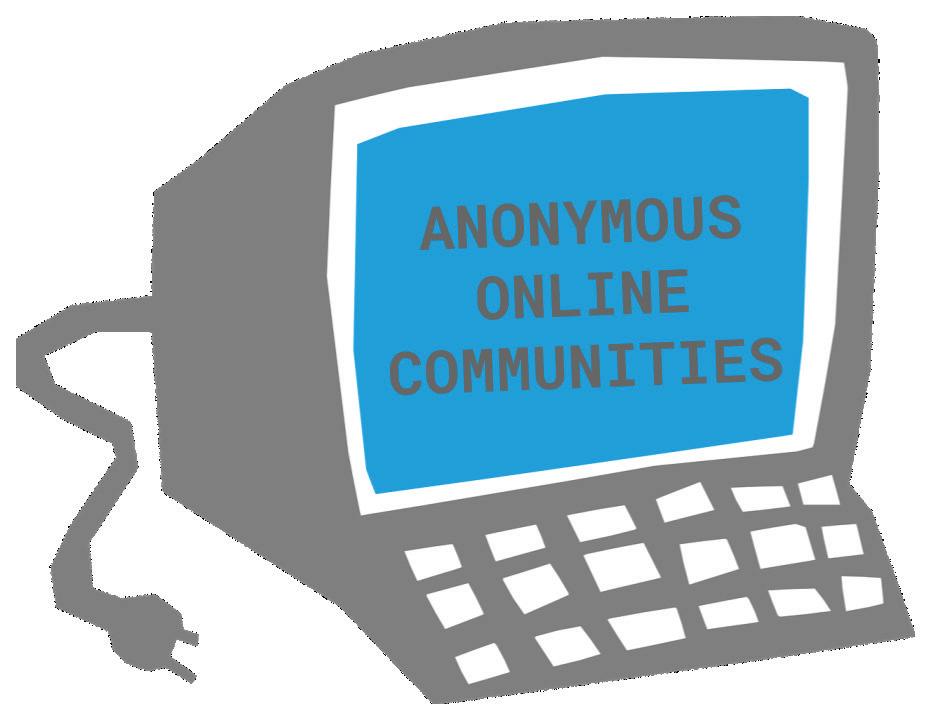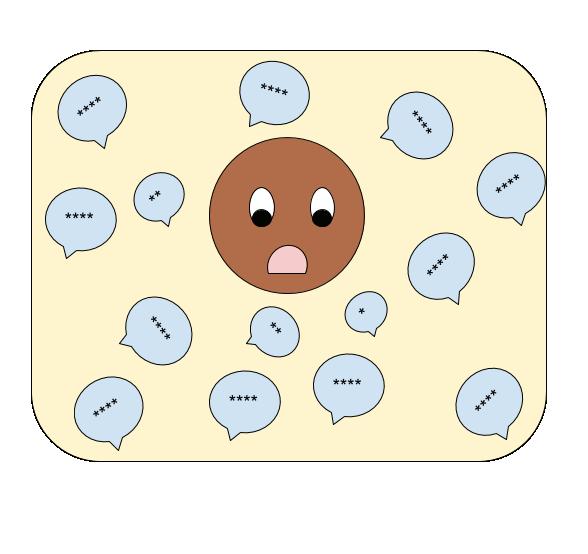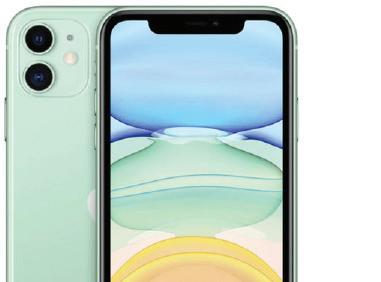
21 minute read
Why Tenure Should Be Abolished
from Issue 6 - May 2020
SARAH POLLANS business manager/copy editor
Since its introduction in the 1920s, the teacher tenure has garnered
Advertisement
as much criticism as it has support.
It was first created as a way to defend
teachers from dismissals based on false or arbitrary accusations. At that time, women made up most of the teachers in America, and with the women’s rights movement just around the corner, the idea of tenure came to protect all teachers from getting fired.
In California, teachers go through a two year probationary status period where they are evaluated by school and district administration. After that, they gain tenure. Under tenure, teachers can only be dismissed for a “just cause” (unsatisfactory performance or misconduct) and must be given written notice of intent to dismiss for unsatisfactory performance. Essentially, tenure gives teachers the right to due process in the event of a remark that potentially warrants dismissal. In 2012, the lawsuit Vergara v. Califor
nia was filed, and lawyers challenged five
statutes. Collectively, these statutes showed that, although tenured teachers are granted a due process before being dismissed, the
process is tedious, expensive, and far more
extensive than the typical process to dismiss a civil servant. Furthermore, the Last In, First Out statute states that, when layoffs are necessary, less experienced, nontenured teachers will be dismissed over tenured teachers and teacher effectiveness must not be used in determining dismissal. Despite the case never making it to the California Supreme Court, it shows how the tenure creates a biased system for tenured teachers and against students.
Similarly, school ad
ministration is less likely to discipline a tenured An idea that has been repeatedly brought up by
teacher over a probationary one, even if the same offense is committed, as it is understood that it will take a lot more time and money to dismiss a tenured teacher than a nontenured one. Imagine if the same held true for students: An supporters of tenure is the fact that the tenure
has been used as a sort of scapegoat for the problems academic institutions may be facing, such as overcrowding, underfunding or poor home environments. And while these issues are
underclassmen getting a harsher punishment than an upperclassman for the same wrongdoing. It simply does not make sense. As for potential tenure-caused repercussions faced by students, giving teachers tenure can equally as prevalent to the school, it is correct that banning tenure will not solve all the issues schools are facing today.
But of course it will not. That’s not the point of banning tenure, nor was it the point of creating
create bad or otherwise complacent teachers.
When a teacher gains tenure, though it does not
explicitly guarantee lifetime employment, it can take years, and potentially hundreds of thousands of dollars, to tenure a near-century ago. Tenures are meant to
protect teachers’ jobs. And that it has done, but it has also made it incredibly difficult to dismiss those who are merely doing the bare minimum to secure their job,
dismiss them. With this security, many teachers may realize that they can do the bare
minimum and still
keep their jobs, as school districts likely will not shell out thousands to fire a complacent tenured teacher. An ineffective teacher directly affects any stu
creating extremely detrimental side effects for the lives of their students.
Those who advocate for tenure say that, as tenure essentially promises job security, it draws more people to the profession and for recruit
ment. While there is little direct evidence for the counter — that having no tenure
dent who has that teacher. For an entire year,
those students are missing out on the learning all their peers are getting from other teachers,
which can potentially result in lower graduation rates, lower college acceptance rates and less income in the future. But how does tenure create bad teachers? Well, the probationary period in which teach
ers are evaluated for tenure is only two years in California. This means that after two years, as most K-12 school teachers are granted tenure, teachers have essentially guaranteed jobs (or at least jobs that are extremely difficult to get fired from). However, two years is not that long of a time — definitely not long enough for most to show their full worth as a teacher or, on the flip side, their complacency as one discourages people from becoming teachers — there is still a problem with this argument. If people are becoming teachers just for tenure’s sake, it still falls into the realm of creating bad
teachers. Even if there is just a select group of teachers in it for the tenure, these teachers will not be as motivated or engaging in the classroom past the probationary period. Simply put, tenure was and is in place to protect and benefit the teachers. And they have been protected — they have been protected to the extent of creating complacent teachers, and it has collectively hurt all of their students. Schools are supposed to be about students’ education, not making teachers nearly impossible to dismiss.
NIKITA SRINIVAS writer
Anonymous online communities have long been commonplace on the internet and subject to controversy.
Those who support these communities argue that anonymity is integral to the productivity and function of their communities. For one, anonymous communities remove the power-related influences that exist in regu
lar conversations, allowing people of all backgrounds and stages of life to communicate on equal grounds.
This factor can both empower societally marginalized voices and act as a check against powerful voices whose ideas alone lack credibility. Supporters also refer to the way anonymity allows people to discuss the validity of unconventional ideas –– regardless of social and career-related pressures. Accordingly, America has a long history of prominent figures publishing their work under pseudonyms, such as Alexander Hamilton with the Federalist papers. Others support using online pseudonyms solely for the sake of privacy. On the other hand, many are concerned with the disruption, and sometimes even extremism, associated with these online communities. Online trolls –– people who purposefully sow discord on the internet through offensive or inflammatory messages –– are the most
widespread example of this, and have caused many
prominent figures to voice their concern. For instance, Randi Zuckerberg, a former director of Facebook, has said that she thinks “anonymity on Facebook has got to go” entirely. In 2010, columnist Leonard Pitts went as far as to say that anonymous comment sections “have become havens for a level of crudity, bigotry, meanness, factual inaccuracy and plain nastiness that shocks the tattered remnants of our propriety.” Most grimly, anonymous communities have faced scrutiny over how they unite people with uncommon, hateful ideologies and allow them to radicalize further. For example, multiple mass shooters have been found to have frequented bigoted 8chan message boards, a website where the
content is largely unrestricted, and where some even published manifestos before their killings. However, people that support online anonymity argue that it makes it easier for the authorities to locate potentially dangerous people, as they are more likely to voice their beliefs in this setting. Regardless of your views on this form of communication, anonymous online communities are mainstream on the internet and do not seem to be going away in the foreseeable future.
LAWRENCE FAN online editor
Whether it is to acquire information, con
nect with like minded individuals, or just to
pass time, many students in Cupertino High School have been actively involved in through sites such as reddit, discord and more. This
should come as no surprise, with However, communicating online strangers is not free of risks, as users expose themselves to potential trolls and cyberbullies One way students access Anonymous Online Communities is through subreddits and discord servers, which can be easily
found on the web. One can sign up as any username, and their identities are completely concealed. Omegle, a website that allows strangers to text or video chat does not even require users to register. Internet anonymity Certainly, the online gaming community is considerable and extraordinarily active. This is even more so the case during the Covid-19 shelter-in-place measures, as teenagers turn to the internet to substitute the lack of in-person company. Another Junior (#2) said, “As of now I tend to spend more time on Online communities texting my friends and playing online games like Fortnite. I would go Online and play with my friends for at least 2-3 hours a day… but I’m trying to limit my time Online with schoolwork and college applications coming around.” The scope of anonymous virtual communities are not limited to video games. Discord servers and subreddits, which focus on a unique subject, are particularly popular among like-minded individuals. Subjects include Cryptocurrency, Anime, and Fortnie,
is also prevalent on social media platforms,
where instagram accounts run by local high school individuals operate with obscurity. Students report that the first extensive interaction often stems from multiplayer video games, connecting with players hundreds or thousands of miles away. Gaming simplifies the bonding aspect of virtual relationships, since all players share the same gaming hobby and goal of succeeding in said game. A junior at CHS (we’ll call him #1) said, “So when I was in 4th grade i started playing Clash of Clans, and basically how it worked
is that I joined a clan… I started talking to these guys in high school and I was 10 and we started talking about it for a solid year, and never communicated with them ever again.” and channels give users the opportunity to
engage in both public chat rooms and private messages with complete strangers. Said #1, “When I was trading cryptocurrency discord was very big on that so we will
talk about what to buy. I’ll give my opinion, asking a question or continuing the discussion, and then I’ll continue the discussion and start building rapport.” Unclaimed Instagram accounts also gain signif icant traction within the student body for both trivial and compelling reasons. Accounts such as @fuhsdadvice, @fuhsd_roasts, and @ confessionsfromchs have amassed hundreds if not thousands of followers intrigued by the unorthodox content they post. Recently, the account @fuhsd.expos.ed went locally viral after calling out the
school district for mishandling sexual assault cases. With the lack of regulation that holds one liable for their actions, members of Anony
mous Online Communities sometimes exhibit inappropriate behavior, disrespecting other members and disrupting the virtual environment. This most frequently materializes
as hateful comments with, but cyberbullying and occasionally even border on harassment. Although it is important to understand that troublesome individuals subtly loom in the web, those cases are rare, and users are approachable and respectful to the most part. “Other than occasional swearing there isn’t anything [too serious]. You could just leave the server [if you have to]. If you wanna talk to anyone online most ppl are pretty open and chill if you are nice,” Said #1 Despite these concerns, Anonymous Online Communities provide a meaningful outlet for many CHS students, and can be constructive intellectually and socially to those who use it. With proper precautions, students can enjoy these diverse and expansive internet communities while avoiding the more negative aspects of them. #2 said, “The best thing you can do is to be confident and don’t be scared to say whatever. Always know that these online relationships can end at any moment, so don’t take the stuff that is said to you personally, because it doesn’t really matter.”

ISSUES With ZOOM
JULIET SHEARIN copy editor
Since the advent of the novel coronavirus pandemic and the subsequent in
troduction of distance learning, Cupertino High School has been contending with the challenges that online anonymity can provide to schooling. One of the most common forms of dis
tance learning, that many teachers have adopted, is through Zoom, a video con
ferencing service that offers free meeting options and scaling paid plans. Zoom has many advantages that make it a viable solution for distance learning; for example, it allows up to one hundred session participants at their free tier, unlike comparable programs like Facebook video chats. In an educational setting, Zoom also does not institute a time limit on their
The options that Zoom provides— screen sharing, video and au ditory teleconferencing, and breakout rooms—make it an in valuable tool for adapting tra ditional teaching styles to an online environment.
meetings. Al
though generally free conferences larger than one-on-one have a forty-minute time cap, given the extenuating circumstances of the global pandemic, this cap was dropped for primary and secondary education. The options that Zoom provides— screen sharing, video and auditory teleconferencing, and breakout rooms—make it an invaluable tool for adapting traditional teaching styles to an online environment.
solution, its widespread adoption indicates it fulfills both teachers’

and students’ educational needs.
However, Zoom also provides a high de
gree of anonymity. Making an ac
count on Zoom does not require payment, which could connect an account to a single real person, nor anything other than an email. Therefore, troll or spam accounts can easily be made with impunity. However, to account for the relative ease of making dummy accounts, Zoom concentrates security to protect meetings themselves. All Zoom sessions can be encrypted with Secure Socket Layer (SSL) encryption, a form of encryption that secures communication between a web browser and a server. What this means practically for Zoom meetings is that communication is encrypt
ed between each computer and the
Zoom server. Nevertheless, Zoom’s com
pany servers receive the encrypted data they transmit to the other meeting participants while
also possessing the key to decrypt it.
Although Zoom’s usage of SSL encryp
tion has raised concerns about their ac
cess to raw data and footage from private
meetings, the company firmly maintains that they do not decrypt, sell or profit off
of users’ data. Nonetheless, they could be compelled by subpoena to hand over meeting data. Every effort to encrypt a Zoom meeting is also worthless if an outside party gains access to the link to join a Zoom meeting. This is the security breach seen most of
ten in Zoombombing, wherein a malicious individual or group gains access to a Zoom meeting and disrupts it by saying or showing obscene or offensive content. Although the meeting link is usually obtained via social media platforms like Twitter and Discord, or is already publicly available, there have been reports of students sharing classroom meeting links with the intent of getting Zoombombed.
Another feature of Zoom compounds the problem: screen-sharing. Because any meeting participant can share their screen at any time, showing offensive content pulled up on a computer screen to an entire class is easy to do and difficult to prevent. Apart from the self-evident negative effects of Zoombombing on learning, a New England teenager has already been arrested on charges of disturbing the peace and computer crime for disrupting a Zoom meeting with obscene gestures and language. As communication and schooling become ever more dependent on technologies like Zoom, practices like Zoombombing raise questions about security and adaptability. The social upheaval currently taking place is quite possibly unrivaled by any other event in a century, and thus a growing period is inevitable. As students and teachers alike accustom themselves to learning via teleconference, life under shelter-in-place, good and bad, threatens to become the new normal. What comes next is uncertain, but Cupertino High School and Zoom are attempting to prepare in the present and boldly meet the future.
PAPARAZZI THE HISTORY OF PAPARAZZI
An analysis on the pra c
STELLA JIA editor-in-chief
pictured with two other women, neither of which was his wife. This photograph marked the beginning
Flash. Click. Capture. The momentum builds as singer-song
writer Shawn Mendes leaves his
Florida abode to take some fresh air from his quarantine shelter. The of an era of new sneaky photog
raphy known now as paparazzi. The word “paparazzi” was coined a little later by Italian film producer Federico Felleni who created a
life of a paparazzo has always been one that fed on drama, attention, and the thrill; however, in this unprecedented time, it has become in

“I belie ve in equality for everyo ne, except
creasingly difficult to capture those moments. Paparazzo are under
re porters and PHOTOGRAPHERS
a unique circum
stance given the limitations placed by health codes.
But how did this
fame chasing lifestyle begin?
The occupation of these free
lance photographers whose role is to capture lifestyle pictures of celebrities originated in the late 1950s when magazines yearned for more candid photographs of famous personalities, especially those that put the celebrity in a compromising position. The first photo which accomplished just that was in Rome, in 1958, taken by Tazio Secchiaroli. Secchiaroli’s target was King Farouk of Egypt, who was
Mahatma Gandhi
film about the culture of Rome at the time. Secchiaroli was included in the film under the character name “Paparazzo” which reminded Felleni of “a b u z z i n g insect.”

E v e r s i n c e the film, photoglike Secchiaroli who aggressively worked for unstaged photos of ce
lebrities have been referred to as the plural form of “Paparazzo”: paparazzi. From the get-go, the motives behind paparazzi were never positive. Magazines wanted drama-stirring photos of celebrities for their magazine to gain attention for their publication. In the past few decades, the

PAPARAZZI THE HISTORY OF PAPARAZZI
cti ces of the papara zzi
limits that paparazzi are pushing to capture photos of celebrities have gotten to the point of extreme intrusion on their personal life. Audienc
es and fans thrive on seeing their favorite or hated celebrities out at a grocery store or caught in an immoral act. However, there is a limit to the extent to which their personal lives should be exposed. One of the most excruciating paparazzi moments was the death of Princess Diana.
She was constantly put under the flashes a n d

clicks of the paparazzi and would find herself with chauffeurs hav
ing to go overspeed to escape the limelight. For the most part, there wasn’t any trouble with escaping the paparazzi in a vehicle until one day in 1997 when the dangerous speed of the car led to a devastating crash and unfortunately, her death. The aftermath of that matter changed the media forever. There have been various incidents later on caused by the paparazzi like in 2005 when Lindsay Lohan was driving away from the camera and crashed her car, and in 2008 when Kanye West trashed the equipment of a nearby photographer at the airport. These encounters have even led to legal confrontations in more recent years, like in 2017 when George
Clooney issued a lawsuit to the paparazzo that appeared to have climbed over fenc
es to get photos of Clooney’s family in

his home in Italy.
The uphas caused an increasing thirst for both fans and paparazzi to capture these candid moments. Along with the increase in online media, many fans have learned the impor
tance of their personal lives stay
ing private and how many factors should be kept private rather than shared publicly with photographs or videos. With this in mind, a celebrity’s fame should never be one that feeds on the backs of these freelance photographers and the industry itself is problematic in letting that happen. When there are more photos of celebrities floating throughout the internet, it fuels the
thirst for fans to want more and thus builds the paparazzi’s desire to take more. The paparazzi age is definitely past its horrific prime as both fans and photographers are not overstepping extreme personal boundaries. Some recent paparazzi have captured celebrities turning the encounter into a more positive situation by holding up posters that brought to light important organizations or issues. Leonardo DiCaprio is notorious for his “clever” disguises and playful reactions to the paparazzi. Even with these amusing reactions, it is still essential to be aware that celebrities’ personal lives should be kept private if they wish so and dedicated fans should respect their privacy as well.
STAFFER TRIES: YUBO & SPOTAFRIEND
KEERTHI LAKSHMANAN editor-in-chief
features than simply swip
ing—you can livestream with
others and watch livestreams ple that were willing to get to
know me. I met a guy who did
nothing but send me snaps of
Yubo and Spotafriend are social media apps notoriously known for being “teen dating” apps. They require you to build a profile—pictures and a short bio—and then set you against thousands of other users with a swipe feature. Both released in 2015, Yubo has grown more popular: it holds at #12 in Apple’s social networking category. It is intended for ages 13 to 25, and promises to “reinvent internet friendships.” Spotafriend is a bit more upfront: it calls itself “a Tinder alternative for people ages 13-19.” The Prospector thought it was time to put their descriptions to the test. Between Yubo and Spotafriend, I would easily place Yubo higher. It earns its popularity with a b ro a d e r r a n g e o f from people on an international scale. The interface is more accessible, too. Spotafriend only allows messaging after you match; in Yubo, there are ways to send friend requests and work from there. The difference is that Spotafriend is geared to be just a teen Tinder, while Yubo expands to giving you the opportunity but lets you decide how to handle it. In my experience, it was easy to meet people. I received a solid handful of cheesy pickup lines, like “imma tell law enforcement you’re essential because you’re a meal”, which his jawline—not to deny that it was considerably impressive, but what’s a girl to do after a few days? I told another one the dog on his profile was cute and he left me on read. So as far as the dating aspect goes, it was a bit depressing. I did hit it off with a few people, but they would live half a country away in Michigan or Iowa; there’s no getting past that. Would I recommend these apps? Yes, for the thick-skinned. The adverse effects of any social media still apply. You need to be okay with putting yourself out there within a massive community— teen dating apps, if anything, are especially vulnerable to causing a lack of self-esteem or obsession with your profile. I do plan to keep my Yubo account active. It is worth it for the few messages that do click like magic. I swapped music and the best Netflix shows with teens from all over the country, I “I met a guy who did nothing but send me snaps of his jawline”
is commendable. But it was nearly Herculean to actually connect with them past the perfunctory “hey, wyd?’ texts.


watched live streams from kids like me and kids very much not
like me, and each message I traded with a stranger was a peek into a new lifestyle.
ANGELA MA writer BROWN SUGAR MILK TEA STAFFER COOKS:
This quarantine has separated you from your friends, classmates, and your favorite drink. We understand. Satisfy your craving and longing for boba with this DIY brown sugar milk tea. You can recreate this internet-crazy drink with 4 simple ingredients and enjoy while in quarantine.
Ingredients:
Boba:
- 3 tablespoons (30g) brown sugar - 3 tablespoons (40g) water

- 7-8 tablespoons (60g) tapioca starch
Syrup:
- 3/8 cup (45g) brown sugar

- 1/4 cup (50g) water
1. Combine water and Syrup:
brown sugar over heat
until it starts to thicken.

2. Add cooked boba
to the syrup and cook until mixture is really thick.
1. Combine brown sugar and water on the Boba:
heat until it boils. 2. Stir in a little bit of tapioca starch until mixture becomes thick.
3. Slowly stir in the rest of the tapioca starch until it becomes a soft dough.
4. Turn out the dough onto a nicely dusted board (with tapioca starch) and knead until it’s nice and smooth. Roll out into thin rope and cut into bite sized pieces.

5. Roll the nuggets into balls and cover
with tapioca starch. 6. To cook, boil them for 10-15 minutes. Stir to prevent sticking
1. Make your favorite black Milk tea (optional):


tea and combine with milk
(for stronger tea flavor add less milk). 2. Add sugar to taste or even add the brown sugar syrup.
1. Put some boba and syrup mixServe:
ture into a cup. To be extra aesthetic, use a clear cup and drip some syrup on the sides of the








